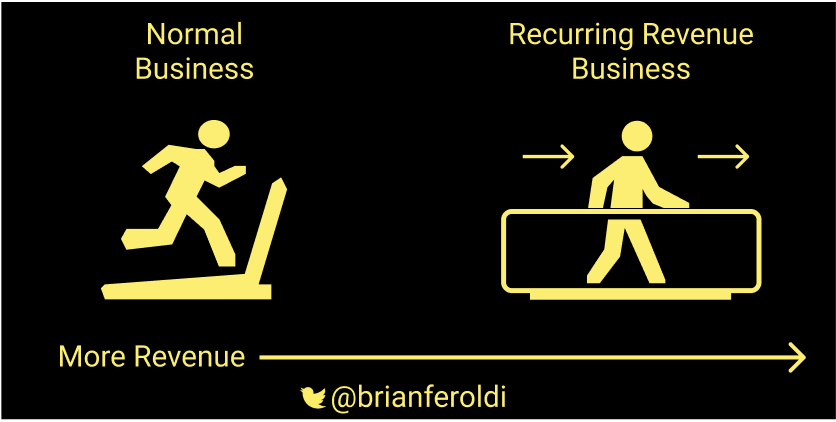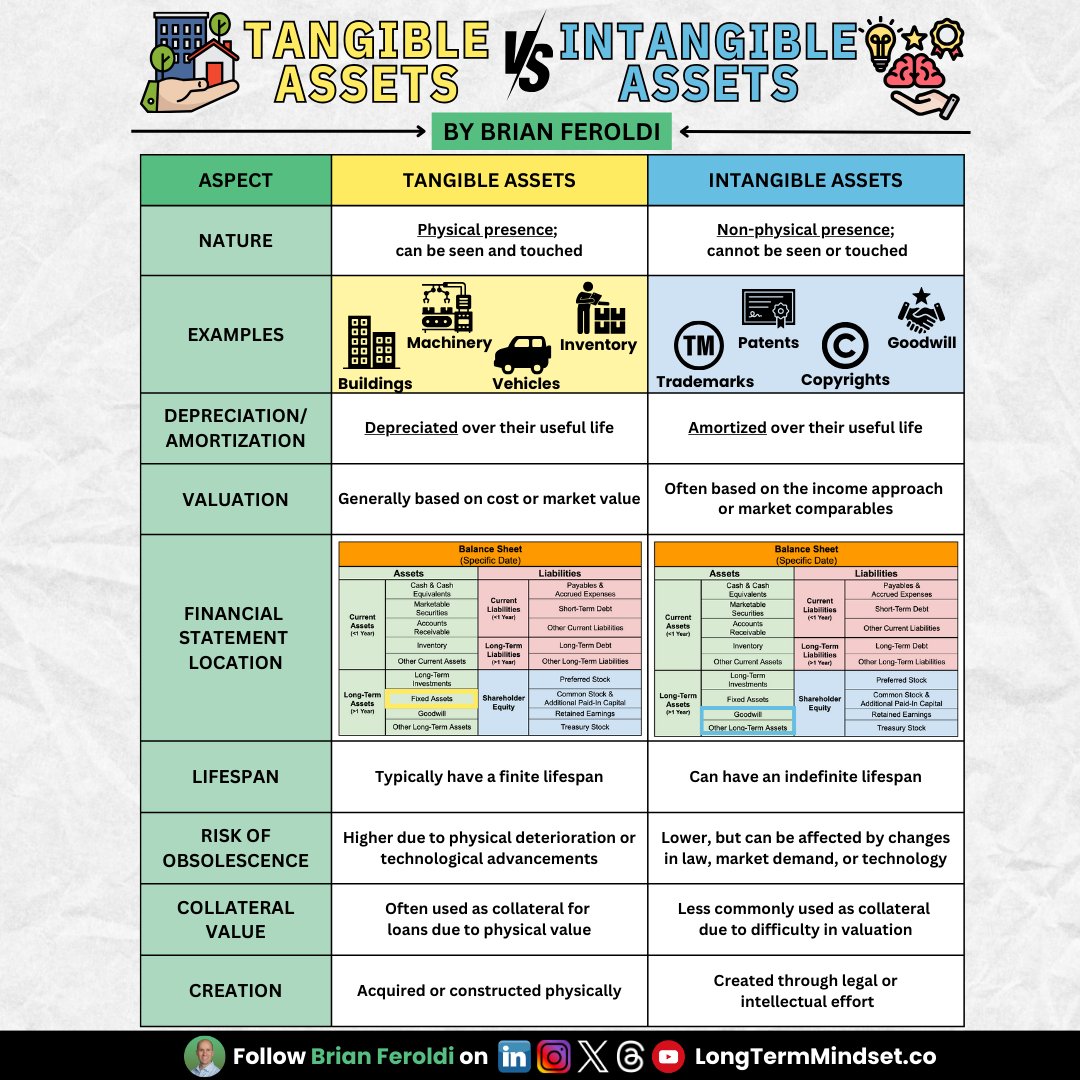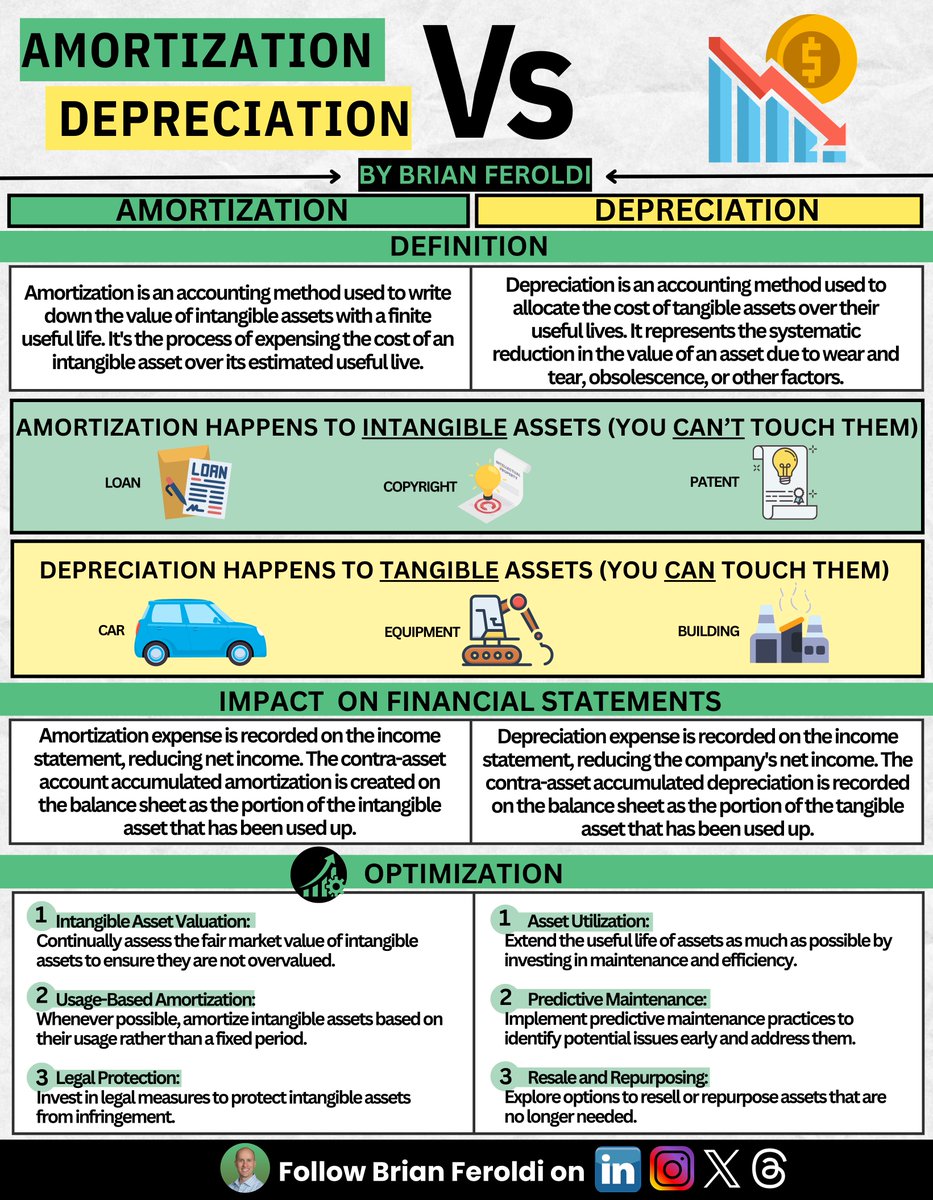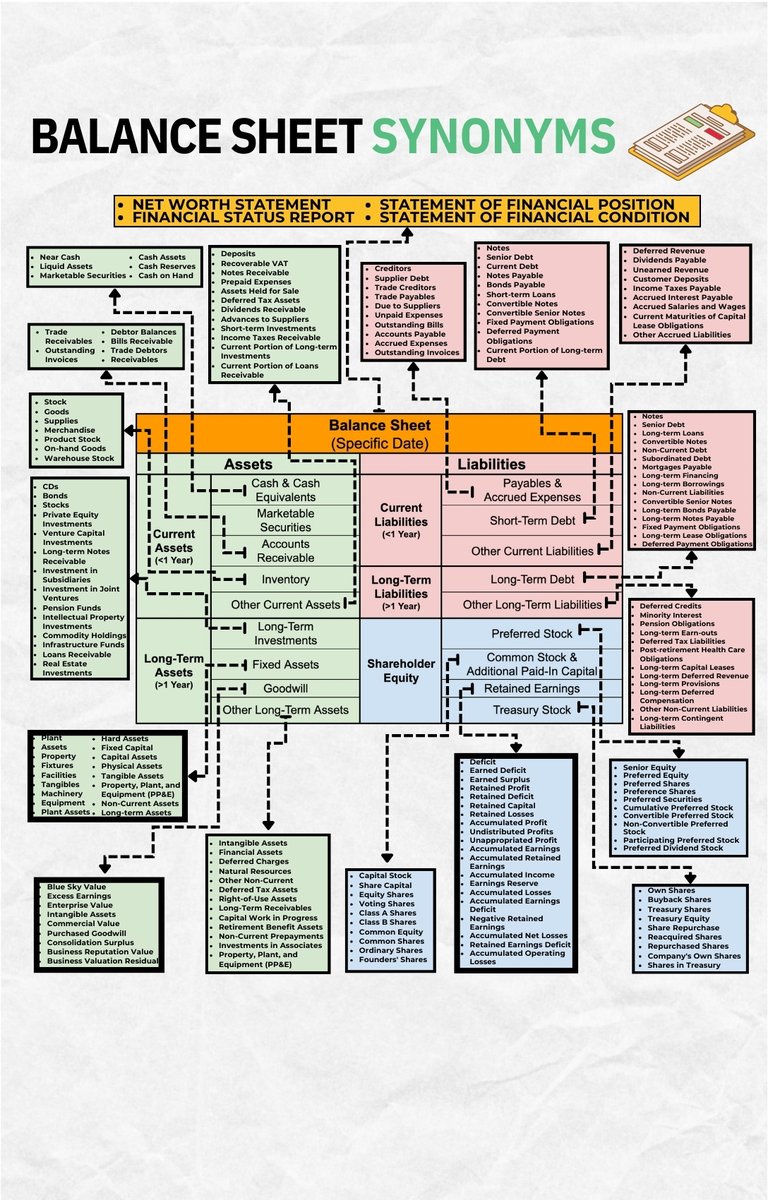My investing style: Buy and hold high-quality businesses
Here are 15 traits that tell me I've found a great business ⬇️
Here are 15 traits that tell me I've found a great business ⬇️
1/ Recurring Revenue
Types:
Business Services $MCO
Contracts $AMT
Consumables $MNST
Exchange $MKTX
Franchise $WINA
Membership $TDOC
Platform $ETSY
Razor/blade $DXCM
Real Estate $STOR
SaaS, PaaS, IaaS $TWLO, $NOW, $FSLY
Subscription $NFLX
Tollbooth $BIP
Types:
Business Services $MCO
Contracts $AMT
Consumables $MNST
Exchange $MKTX
Franchise $WINA
Membership $TDOC
Platform $ETSY
Razor/blade $DXCM
Real Estate $STOR
SaaS, PaaS, IaaS $TWLO, $NOW, $FSLY
Subscription $NFLX
Tollbooth $BIP

2/ Recession-Proof Demand
Great companies sell products/services that are in-demand in good times and bad
That allows them to grow regardless of what is happening in the broader economy
Great companies sell products/services that are in-demand in good times and bad
That allows them to grow regardless of what is happening in the broader economy

3/ Organic Growth
"Organic" growth: Growing by increasing sales of internally developed products/services
"Inorganic" growth: Growing from mergers & acquisitions
Organic Growth > Inorganic Growth
"Organic" growth: Growing by increasing sales of internally developed products/services
"Inorganic" growth: Growing from mergers & acquisitions
Organic Growth > Inorganic Growth

4/ High & Expanding Gross Margin
Indicates that the company’s products/services create a huge amount of value for the customer
Rising gross margin also indicates pricing power
Indicates that the company’s products/services create a huge amount of value for the customer
Rising gross margin also indicates pricing power

5/ Widening moat
Capitalism is brutal
A widening moat will protect a company's profits from competition
Sources:
Network effects: $FB
Switching costs: $ADBE
Durable Cost Advantage: $WMT
Premium Brand: $PTON
Patents: $OLED
Counter-Positioning: $TSLA
Capitalism is brutal
A widening moat will protect a company's profits from competition
Sources:
Network effects: $FB
Switching costs: $ADBE
Durable Cost Advantage: $WMT
Premium Brand: $PTON
Patents: $OLED
Counter-Positioning: $TSLA

6/ Operating Leverage
If a company can grow its costs at a slower rate than revenue then its profits will grow at a FASTER than revenue
This concept was visualized beautifully by @10kdiver
If a company can grow its costs at a slower rate than revenue then its profits will grow at a FASTER than revenue
This concept was visualized beautifully by @10kdiver
https://twitter.com/BrianFeroldi/status/1369806693882814470?s=20
7/ Low-cost customer acquisition
The best marketing is no marketing
Great companies create demand through word of mouth and spend little on sales & marketing
The best marketing is no marketing
Great companies create demand through word of mouth and spend little on sales & marketing

8/ Diversified Revenue
Companies that depend on a few customers for most of their revenue are fragile
One customer leaving can ruin the investing thesis
Great businesses serve thousands of customers, not just a few big ones
Companies that depend on a few customers for most of their revenue are fragile
One customer leaving can ruin the investing thesis
Great businesses serve thousands of customers, not just a few big ones

9/ Great Management
Management matters
Here is a thread I wrote in what I look for in a great CEO
Management matters
Here is a thread I wrote in what I look for in a great CEO
https://twitter.com/BrianFeroldi/status/1391395614500532230?s=20
10/ Reinvestment Opportunities
Great businesses can reinvest profits back into themselves at high rates of return for long periods of time
This continuously grows the profit stream, which will eventually lead to share price appreciation
Great businesses can reinvest profits back into themselves at high rates of return for long periods of time
This continuously grows the profit stream, which will eventually lead to share price appreciation

11/ Profits
Companies that produce profits have far more control over their destiny than companies that don’t
I want to see that both net income & free cash flow are positive & growing
Companies that produce profits have far more control over their destiny than companies that don’t
I want to see that both net income & free cash flow are positive & growing

12/ Optionality
Great companies create new revenue opportunities for themselves by launching new products/services that open up new markets
Ex:
$AMZN -> AWS
$MELI -> Payments
$TSLA -> Energy Storage
Great companies create new revenue opportunities for themselves by launching new products/services that open up new markets
Ex:
$AMZN -> AWS
$MELI -> Payments
$TSLA -> Energy Storage

13/ Huge Total Addressable Market (TAM)
I want to own companies that have only captured a small fraction of their opportunity
That creates a long runway for continued growth
I want to own companies that have only captured a small fraction of their opportunity
That creates a long runway for continued growth

14/ Price Maker
Companies that sell commodities have no control over the price of their product
I want to own price makers, not price takers
Companies that sell commodities have no control over the price of their product
I want to own price makers, not price takers

15/ Anti-Fragile Balance Sheet
Cash-rich companies get stronger in downturns
Debt-laden companies get weaker in downturns
Cash-rich companies get stronger in downturns
Debt-laden companies get weaker in downturns

Enjoy this thread?
I regularly tweet about money, investing, and self-improvement
If those topics interest you, follow me
@BrianFeroldi
I regularly tweet about money, investing, and self-improvement
If those topics interest you, follow me
@BrianFeroldi
Want to see me & @tmfstoffel show you how we research a business in real-time?
We do so weekly on my YouTube channel
youtube.com/c/brianferoldi…
We do so weekly on my YouTube channel
youtube.com/c/brianferoldi…
To summarize, I want:
✔️Recurring Revenue
✔️Recession-Proof
✔️Organic Growth
✔️High GM
✔️Widening moat
✔️Operating Leverage
✔️Low-cost Marketing
✔️Diversified Customers
✔️Great Management
✔️Reinvestment
✔️Profits
✔️Optionality
✔️Huge TAM
✔️Price Maker
✔️Strong Balance Sheet
✔️Recurring Revenue
✔️Recession-Proof
✔️Organic Growth
✔️High GM
✔️Widening moat
✔️Operating Leverage
✔️Low-cost Marketing
✔️Diversified Customers
✔️Great Management
✔️Reinvestment
✔️Profits
✔️Optionality
✔️Huge TAM
✔️Price Maker
✔️Strong Balance Sheet
• • •
Missing some Tweet in this thread? You can try to
force a refresh





















